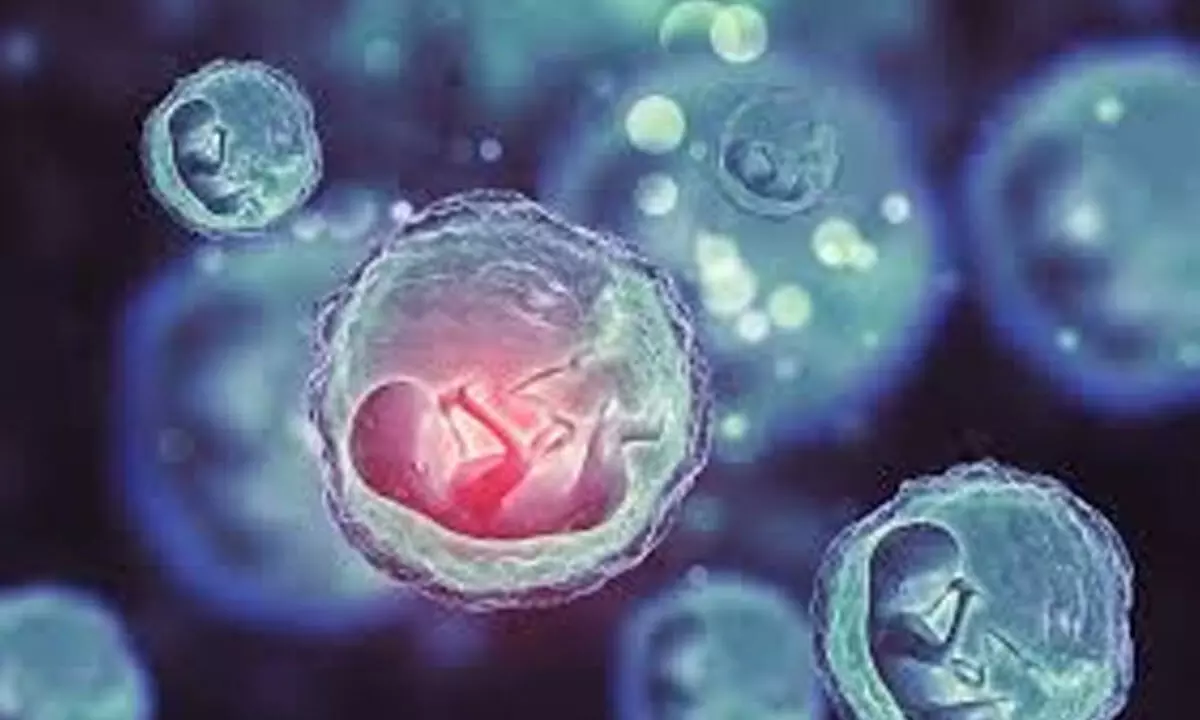Stem-cell babies could be a reality someday

Stem-cell babies could be a reality someday
Nova Scotia: In January 2017, I met Jiankui He, the now-infamous Chinese scientist who would go on to create the world’s first genome-edited babies.
Nova Scotia: In January 2017, I met Jiankui He, the now-infamous Chinese scientist who would go on to create the world's first genome-edited babies. This was at a meeting in Berkeley, Calif., hosted by Jennifer Doudna who, along with Emmanuelle Charpentier, was awarded the 2020 Nobel Prize in Chemistry for her work on CRISPR genome-editing technology. At this meeting, geneticist George Church, known for his work to revive the woolly mammoth, described research on "synthetic human embryos" derived from stem cells. Church dubbed these embryo-like structures "synthetic human entities with embryo-like features." At the time, Church called for careful sustained dialogue about the moral merits of the 14-day limit on human embryo research.
Synthetic monkey embryos
This month, a team of Chinese scientists created "synthetic monkey embryos" or, more precisely, synthetic monkey embryo-like structures from stem cells and used these for reproduction. The reported research involved an in vitro study — meaning it was conducted in the lab — as well as an in vivo study, conducted in the body. The in vitro study involved the ongoing culture of the monkey embryo-like structures in the lab to see how they might develop after the time at which implantation would typically occur. Under the microscope, these embryo-like structures initially looked like "natural" early-stage embryos — embryos created using eggs, sperm and fertilisation. They became disorganised over time, however, and only five of 484 early-stage synthetic embryos survived to Day 17.
The in vivo study involved the transfer of seven-day-old monkey embryo-like structures to eight female monkeys in the hope of initiating a pregnancy. Implantation occurred in three of the monkeys, but the pregnancies were short-lived. The synthetic monkey embryos stopped developing within 20 days post-transfer and no fetuses formed.
Initiating pregnancy
The creation of non-human embryo-like structures is not new. In 2022, two research teams — one in Israel and another in the United Kingdom — reported on the creation of mouse embryo-like structures from mouse stem cells. The attempt to initiate a pregnancy in female monkeys using monkey embryo-like structures is new, however, and suggests that it might one day be possible to attempt the same in humans.
Presumably, the goal would be to allow scientists to study early human development, including neurodevelopment, and to study pregnancy loss. This most recent research raises a critical ethical question: Are synthetic human-like embryo structures sufficiently different from human embryos created by fertilisation to be exempt from the current limits on human embryo research? The question is timely as researchers have already used human stem cells to create a human blastocyst model.
Some researchers may argue that "synthetic" and "natural" human embryos are not the same, and that synthetic human embryos should not be subject to the rules governing natural human embryos. Others will disagree. Presumably, the truth of the matter will turn on whether the synthetic embryos can produce a live baby, but the only way to know this is to do the experiment.
R&D guidelines
Clearly this research, and earlier studies, challenge the current international consensus on the 14-day rule that dictates human embryos cannot be maintained in the laboratory beyond 14 days post-fertilisation. The 14-day rule is the law in Canada, and is a widely accepted research guideline in many countries around the world. It prohibits the development of human embryos outside the human body beyond 14 days. This limit was introduced in the early 1980s.
Up to 14 days, it was possible for one human embryo to split and become twins or for two human embryos to recombine and become a single individual. On the basis of these biological facts, some reasoned that prior to 14 days, human embryos were not discrete individuals and so they were not protectable human life. They could be used for research in a lab and then discarded. Others who also supported a 14-day limit on human embryo research focused on a different developmental milestone, the primitive streak, which usually appears on Day 15 and signals the development of the nervous system and the brain.
Prior to 14 days, the human embryo could not experience pain and did not have the capacity for human reasoning. On this basis, a similar conclusion was reached: human embryos could be the legitimate subject of research until 14 days. Arbitrary limit? For some time now, scientists have argued that the 14-day limit is arbitrary and should be changed.
Now that it's possible to maintain natural embryos in culture beyond 14 days, and may be possible to do so as well for synthetic embryos, some members of the scientific community insist that the 14-day limit should be revised or eliminated.
All of this has me wondering if in the not-too-distant future, I (and others) will be commenting on the ethics of the world's first stem-cell babies. If so, will the commentary be similar to the response to the first genome-edited babies, which was uniformly critical? Or, by that time, will some celebrate this as a creative way to make designer babies?
(Writer works at Dalhousie University, Nova Scotia, Canada)















